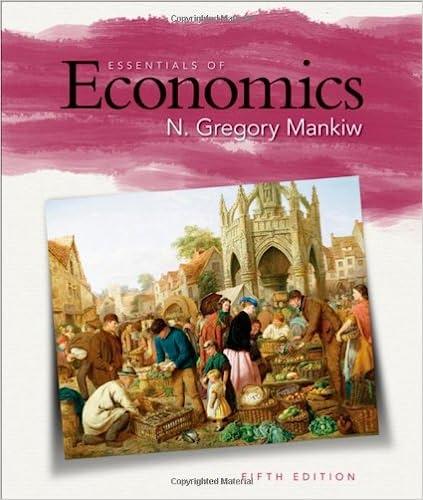Question
no missing data****select the most correct answer 50. (1) When the economy is going strong: firms expand their operations. demand for workers increases. GDP growth
no missing data****select the most correct answer
50.(1)
When the economy is going strong:
firms expand their operations.
demand for workers increases.
GDP growth is positive.
All of these are true.
51.(1)
When governments subsidize retraining programs for unemployed workers to learn new skills, they are trying to minimize the effects of which kind of unemployment?
Frictional
Structural
Seasonal
Real-wage
52.(1)
Jake just quit his job as a shoe salesman and is looking for work as an accountant, which is what his college degree is in. Jake would be considered:
frictionally unemployed.
structurally unemployed.
cyclically unemployed.
classically unemployed.
53.(1)
Structural unemployment:
is unemployment that results from a mismatch between the skills workers can offer and the skills that are in demand.
is unemployment caused by workers who are changing their location, job, or career.
is the effect of wages remaining persistently above the market-clearing level.
typically causes the shortest stints of unemployment.
54.(1)
Frictional unemployment:
is unemployment that results from a mismatch between the skills workers can offer and the skills that are in demand.
is unemployment caused by workers who are changing their location, job, or career.
is the effect of wages remaining persistently above the market-clearing level.
is the most alarming cause of unemployment.
55.(1)
Sonia has a PhD in art history, and is currently working full-time as a waitress. The Bureau of Labor Statistics would count Sonia as:
employed.
underemployed.
unemployed.
a discouraged worker.
56.(1)
Discouraged workers are people who have:
looked for work in the past year but have given up looking because of the condition of the labor market.
not looked for work in the past year but would take a job if one was offered to them.
looked for work in the past year but have decided to leave the labor market to go back to school, retire, or be a stay-at-home parent.
not looked for work in over a year because of the condition of the labor market.
57.(1)
Economists report changes in unemployment in:
percentage points, not percentages.
percentages, not percentage points.
percentage points or percentages, interchangeably.
nominal figures, and rarely use percentages or percentage point changes.
58.(1)
People with less education are:
more likely to be unemployed than people with more education.
less likely to be unemployed than people with more education.
just as likely to be unemployed than people with more education.
not comparable to people with more education.
59.(1)
The unemployment rate tells us:
what percentage of the labor force wants to work and can't find a job.
who is currently unemployed.
why the unemployed can't find work.
All of these are true.
60(1)
In the United States, to count as unemployed, you must:
be younger than 65 years old.
want to work.
be skilled enough to hold a job.
All of these are true.
61.(1)
When the economy fluctuates around its long-run aggregate supply:
it is called the business cycle.
the economy is in a state of chaos.
the value of currency becomes unstable.
None of these is true.
62.(1)
Net exports are:
exports minus imports.
imports minus exports.
imports divided by exports.
imports plus exports.
63.(1)
Lower interest rates motivate:
firms to invest less in new factories and working capital.
firms to invest more in new factories and working capital.
individuals to spend less on consumption goods.
individuals to spend less on capital goods.
64.(1)
Higher interest rates motivate:
firms to invest less in new factories and working capital.
firms to invest more in new factories and working capital.
individuals to spend more on consumption goods.
individuals to spend more on capital goods.
65.(1)
When prices rise, the interest rate:
tends to rise.
tends to fall.
is usually not affected.
will rise if the wealth effect outweighs the price effect.
Step by Step Solution
There are 3 Steps involved in it
Step: 1

Get Instant Access to Expert-Tailored Solutions
See step-by-step solutions with expert insights and AI powered tools for academic success
Step: 2

Step: 3

Ace Your Homework with AI
Get the answers you need in no time with our AI-driven, step-by-step assistance
Get Started


